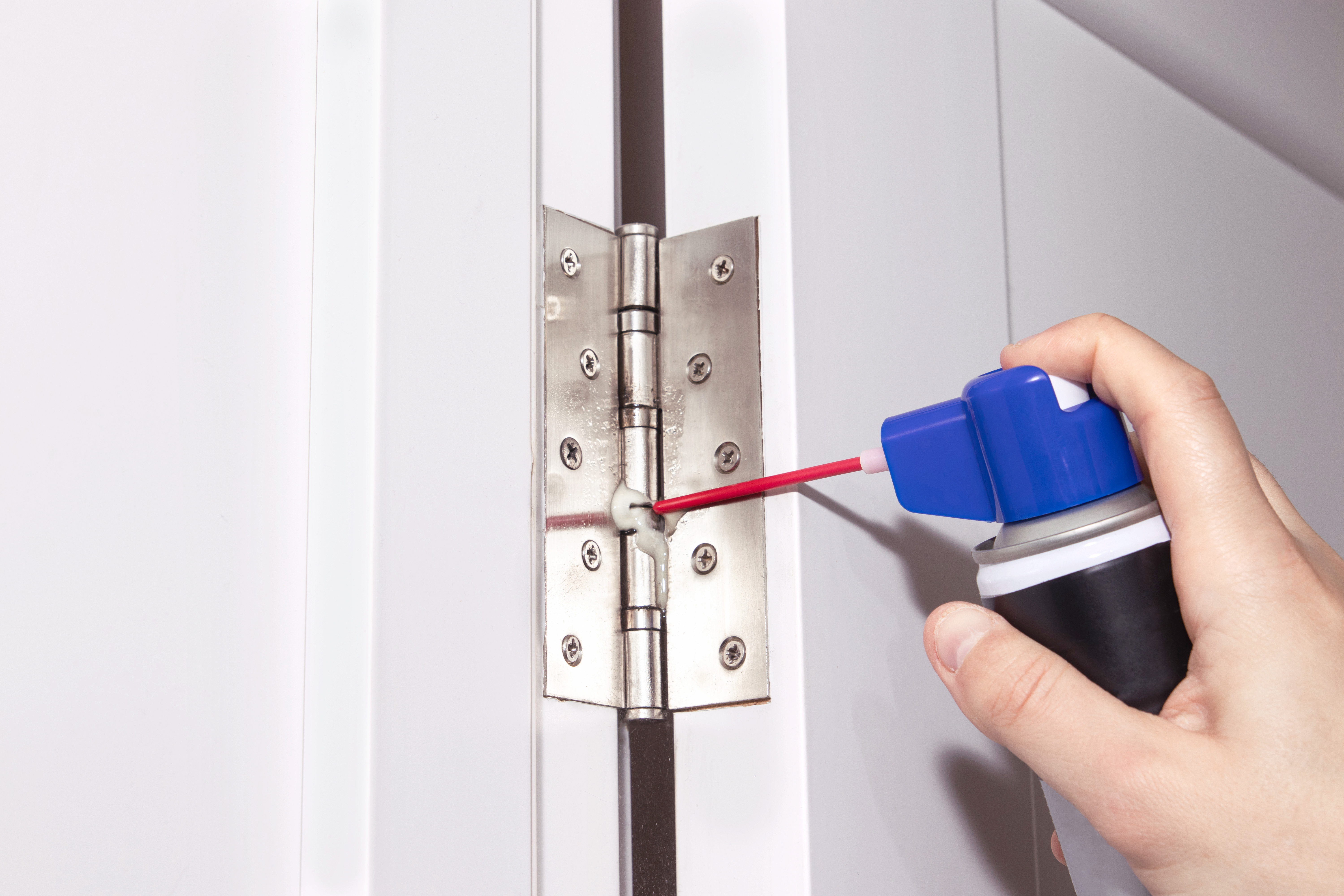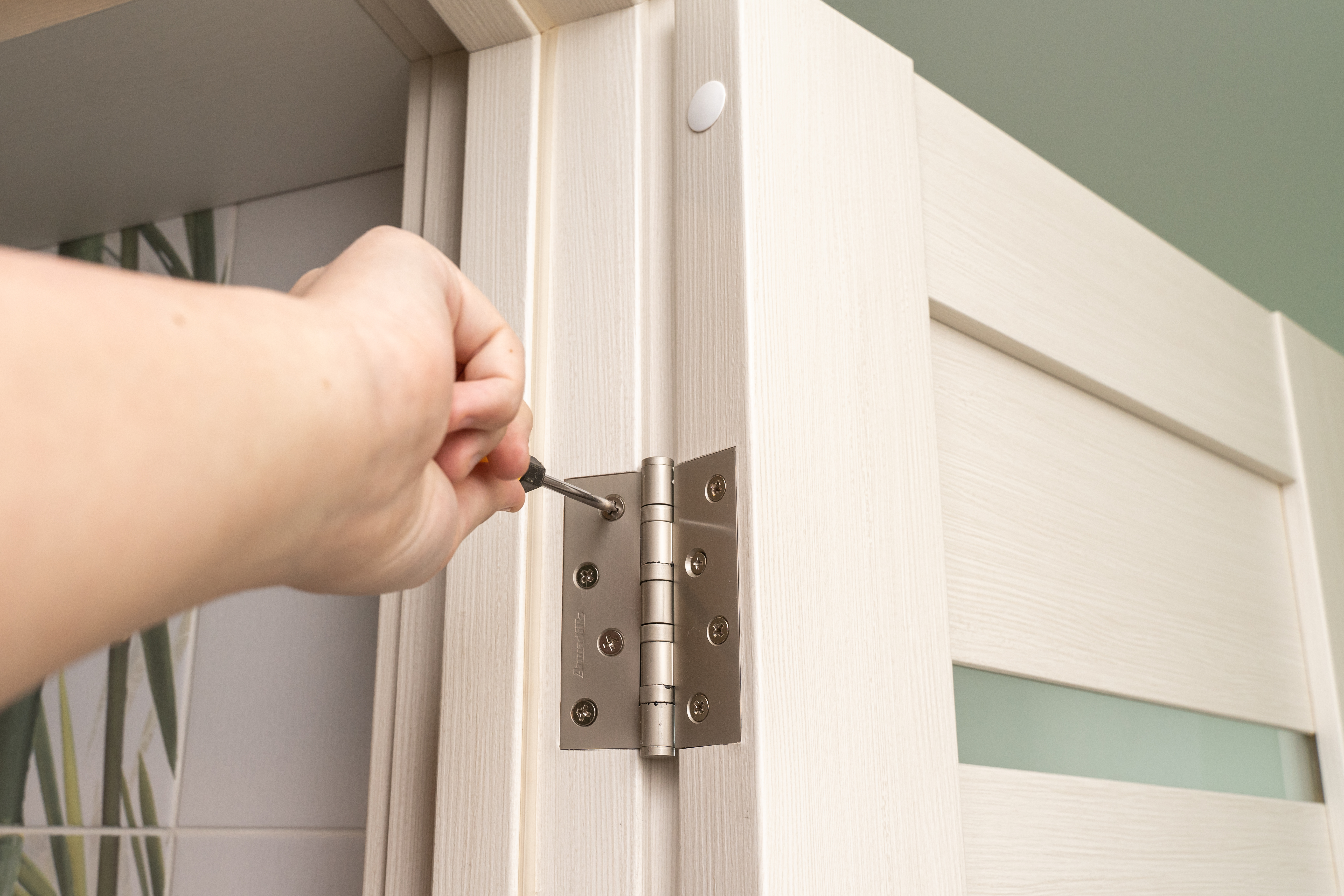
Create more usable space by installing a garage door screen, which allows for entertaining or working with plenty of fresh air and zero bugs. Here’s how much installing a garage door screen will cost you.
Swing into some hinge rescue


Door hinge problems are usually caused by usage and wear and tear.
With the potential for a door to fall always looming, DIY door hinge fixes should be reserved for problems that don't require you to loosen or remove a door.
A well-performing door hinge begins with proper door installation that includes a hinge rated for a door's weight.
A loose or unwieldy hinge can render a door pointless if it means you can't freely open and shut it. In addition to being a nuisance, a broken hinge can also be a safety issue that prevents you from controlling access in and out of a space. Fortunately, there's a way to fix door hinge problems in a pinch. Read along to get a handle on your malfunctioning door hinge ASAP. Of course, even the most confident DIYers should remember that heavy doors can be dangerous to remove without the help of a pro.

If a door creaks, it is a telltale sign that the hinges are dry or rusting. Regular usage, high moisture in the air, and other common factors can all make hinges brittle or rusty.
In most cases, a petroleum-based penetrating oil, silicone spray, or other greasing product that you can get from the local hardware store will do the trick. Here's how to lubricate squeaking hinges:
Start by wiping away any dust or debris from the hinges using a dry cloth.
Next, apply a dab-sized amount of your greasing agent on the hinge pin.
Open and close the door several times to help the grease be evenly distributed throughout the hinge hardware.
Gently wipe away any remaining grease using a dry rag or paper towel.
Most sagging doors are simply caused by the wear and tear placed on the hinge pin by constantly opening, shutting, and slamming a door. Over time, hinge pins can become loose or worn. A worn hinge pin is the top reason for a door sagging or opening on its own.
For this one, you'll need to know how to remove a door hinge pin. If you suspect that a worn hinge pin is to blame for a sagging door, you can try replacing it using these steps:
Place a wedge or another object under the door to stabilize it. This is a two-person job because one person should always be monitoring the door's stability.
Use a special pin removal tool to glide the hinge pin out. The tool will sit on the hinge knuckles and touch the bottom of the hinge pin.
Next, use a hammer to gently knock the pin out.
Gently slide in a replacement pin.

If your door is sticking, it's likely that your hinge is misaligned. If it's a newer door, improper installation may be to blame. Your house settling can also change the position of the door in a way that causes sticking.
To confirm that your sticking door is caused by a misaligned hinge, run through this checklist:
With the door closed, look around the frame for gaps or signs of the door rubbing against the frame. This should confirm your suspicions.
Next, take out a level to check to see if the door is hanging straight.
If the door is misaligned, you'll need to adjust the hinge placement.
To realign, loosen the screws on the off-balance hinge or hinges. If doing more than one hinge, complete them one at a time. Gently adjust the position into the correct alignment that will allow your door to hang straight. Finish by tightening the screws and repeating the checklist to confirm that your door is now hanging straight.
The most common cause of a loose door hinge is a stripped screw hole. Damage that can loosen or compromise hinge screw holes could occur if you use a strategy that involves sharp or abrasive objects to get paint off hinges.
If stripped screw holes aren't badly damaged, most homeowners can simply swap in longer screws. To do this, remove existing screws before replacing them with new screws that are long enough to reach through the other side of the door jamb. In general, this means choosing screws with an extra 1/2 inch in length.
If screw holes are in rough shape, consider calling in a professional to perform a fix that is far more complex. Here are the steps for fixing stripped screw holes with the full door-removal method:
First, remove the door. Wedges should be placed at the underside and the bottom outside corner to keep it level and stable.
Next, remove the screws securing the loose hinges to the jamb.
To prepare the jamb, swing the hinge leaf in the opposite direction and carefully bore out your stripped holes using a drill bit.
Use carpenter's glue to insert 1-inch by 3/8 inch wood dowels into each hole. Dowels should be held in place until they become flush with the jamb. Glue typically takes an hour to dry.
Finally, put your hinge back in place by creating pilot holes in the middle of each dowel that will be used to screw hinges back in.
If the fix you need to stop door hinge problems requires you to remove pins or loosen the actual hinge, be vigilant of the fact that you will be dealing with an insecure door during the process. A heavy door could cause injury or harm to humans, pets, and your home's walls and flooring if it's not properly secured. Additionally, there is a risk that the hinges or pins could be put back in place improperly to leave the door vulnerable to falling down at an unexpected time. If you're at all uncertain about the best way to approach a problem with a door hinge, reach out to a door repair pro near you for help.
Make sure not to skip hinges in your routine door maintenance checklist. Here are some maintenance tips to keep your hinges working for years to come:
If you notice sticking, sagging, or loose hinges, address the issue right away to avoid putting undue stress on the hinges. This can prevent the need to replace hinges.
Dust hinges every few weeks to prevent dust and dirt from causing wear and tear.
Use a silicone-based lubricant on hinges at least once a year.
Prevention of hinge problems starts with installation. If you're installing a new door, confirm that the hinges used are rated for the specific door's weight to avoid one of the most common and preventable door installation problems. This is especially important if you're planning to repurpose existing hinges when replacing a door in your home.
From average costs to expert advice, get all the answers you need to get your job done.

Create more usable space by installing a garage door screen, which allows for entertaining or working with plenty of fresh air and zero bugs. Here’s how much installing a garage door screen will cost you.

When adding a fresh new entryway to your home, you may be curious about the cost of sliding glass doors. Let's break it down by size, style, and design.

Discover fire door cost data, including installation, materials, and tips to save. Learn what impacts fire door pricing and how to budget for your project.

If you’re new to an inclement-weather-prone area, it might be time to learn how to install a storm door. Explore our straightforward eight-step guide here.

Installing a strike plate is the last step in your door installation. Learn how to cut out a hole for the door plate in the frame with this simple technique.

French doors are an elegant way to let light in and provide access to the side or rear of your home. Learn what French doors are and why they’re so popular.